AI for Teaching and Learning Video Series
Produced by Notre Dame Learning and the Office of Information Technology’s Teaching & Learning Technologies (TLT) team, the AI for Teaching and Learning video series offers general background about generative AI along with helpful tips and on-screen demos exploring its use in educational contexts specifically.
-

Opening the Dialogue on AI in Education
2024-08-15
Ron Metoyer, Notre Dame’s vice president and associate provost for teaching and learning, introduces the AI for Teaching and Learning video series. He highlights how AI is changing education and encourages those who teach at Notre Dame to explore tools like ChatGPT, build their understanding of AI, and have open conversations with students about the technology’s pros and cons. Drawing a parallel between the current state of technological change and the experience of using web browsers for the first time in the 1990s, Metoyer expresses his confidence that educators can and will successfully navigate AI’s impact, now and in the future.
Resources
-

Preparing Students for an AI-Integrated Future
2024-08-15
Karla Badillo-Urquiola, Clare Boothe Luce Assistant Professor of Computer Science and Engineering, discusses the importance of faculty cultivating AI literacy among their students. She notes that the use of AI is no longer reserved for tech enthusiasts, emphasizing that it can be leveraged by faculty and students from all academic backgrounds. Possessing basic AI literacy also empowers students to understand how these technologies are affecting the information they consume and the decisions made by companies and governments. Finding ways to engage with students about AI so that they can critically assess it, consider its ethical implications, and understand its societal impacts is therefore essential.
Resources
-

Intro to Generative AI
2024-08-14
John Behrens, director of the Technology and Digital Studies Program in the College of Arts and Letters, provides an overview of generative AI, explaining its powerful capabilities in performing tasks once limited to humans, including text and image generation. He outlines five key concepts: AI’s extraordinary abilities, the variety of its outputs, associated challenges and risks, its impact on human tasks, and its evolving nature. Behrens emphasizes the importance of understanding AI’s limitations and the responsibility users must take when utilizing these systems.
Resources
-
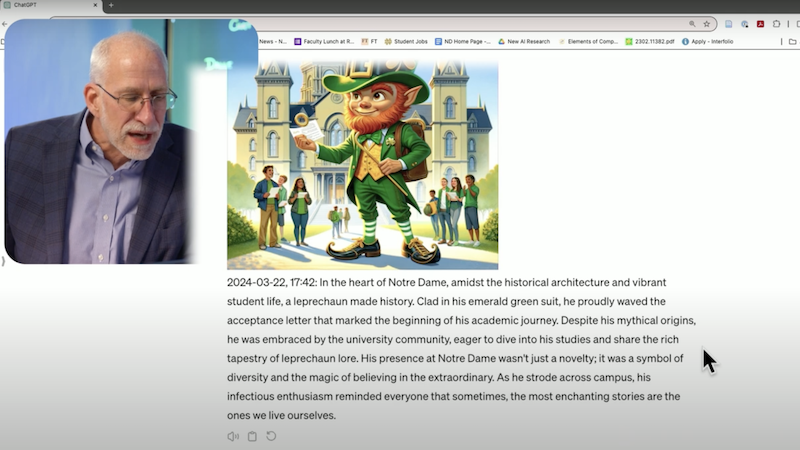
Intro to Text-to-Text Systems
2024-08-13
Text-to-text generative AI systems like ChatGPT generate text in response to user prompts based on complex statistical models. Unlike search engines, they create new content in real time, with output quality depending on prompt specificity and system capabilities. These systems are interactive, allowing users to refine and update responses through conversation. While the results can be varied and creative, the outputs are influenced by probabilities, leading to inconsistencies. Despite their imperfections, when used correctly, these tools can be powerful and significantly enhance productivity and task completion.
-
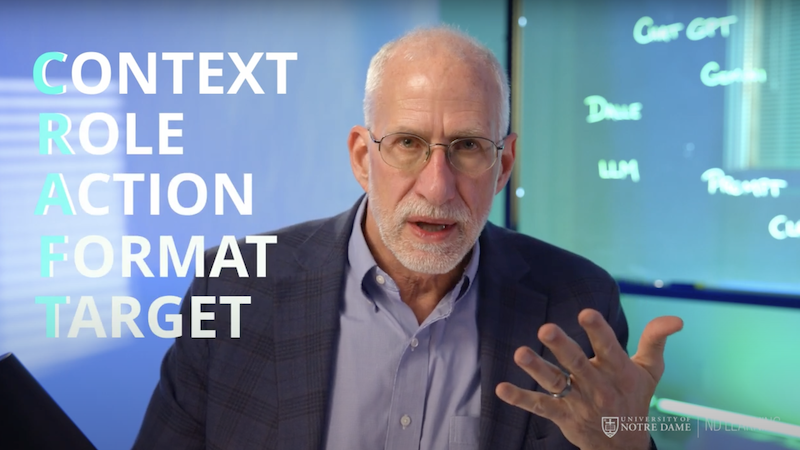
Generating Prompts
2024-08-12
When using text-to-text AI systems, how you prompt the system significantly impacts the results. Effective prompts should be specific and detailed, considering the system’s probabilistic nature. The CRAFT framework (Context, Role, Action, Format, Target) can help structure prompts effectively. Iterative prompting, providing examples, and asking the AI to evaluate or refine its output can enhance the interaction, as well. You can also experiment with different personas and languages to tailor responses. For complex tasks—this video uses the creation of a syllabus as an example—guiding the AI to think step-by-step or take its time can improve the output, making AI a more effective tool in various contexts.
-
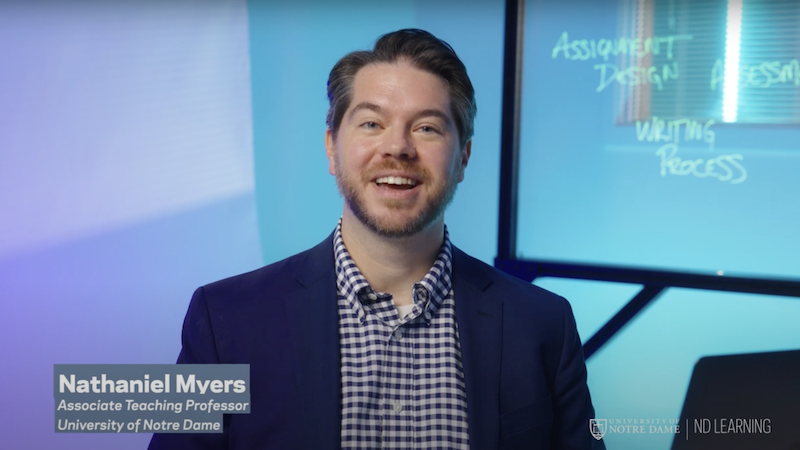
Designing Writing Assignments in the Age of Generative AI
2024-08-11
Nathaniel Myers, an associate teaching professor in Notre Dame’s University Writing Program, discusses the impact of generative AI on student writing and offers strategies for designing assignments that promote authentic learning and discourage misuse of tools like ChatGPT and Google Gemini. He emphasizes the importance of focusing on the writing process, allowing student choice, incorporating formative assessment, and critically engaging with AI-generated content. By pairing AI and human feedback and encouraging critical evaluation, educators can help students navigate the use of AI in writing while maintaining academic integrity.
Resources
-
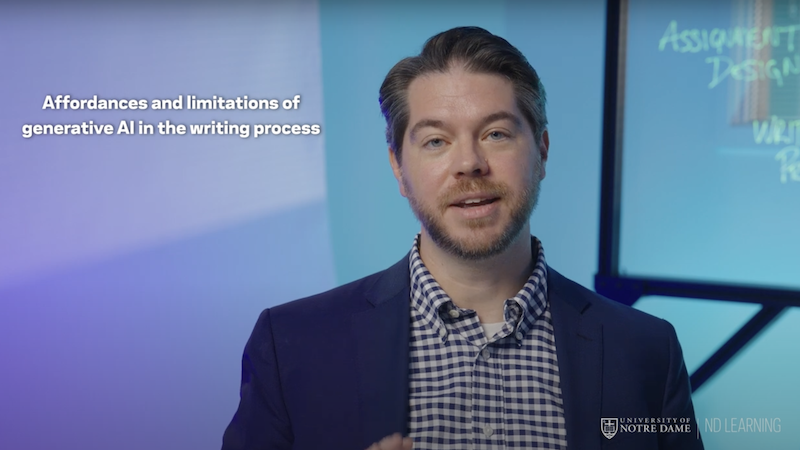
Learning Goals and Generative AI in Writing Assignments
2024-08-10
This video explores how to design writing assignments in the context of generative AI, focusing on preserving key learning goals while considering AI's potential benefits and drawbacks. It offers guidance on where AI can assist in the writing process, such as brainstorming and research, and where it may inhibit deeper learning. The video emphasizes the importance of critical engagement with AI, modeling best practices, and creating AI-free writing spaces. It also recommends requiring students to cite any use of AI to maintain transparency and integrity in their work.
Resources
-
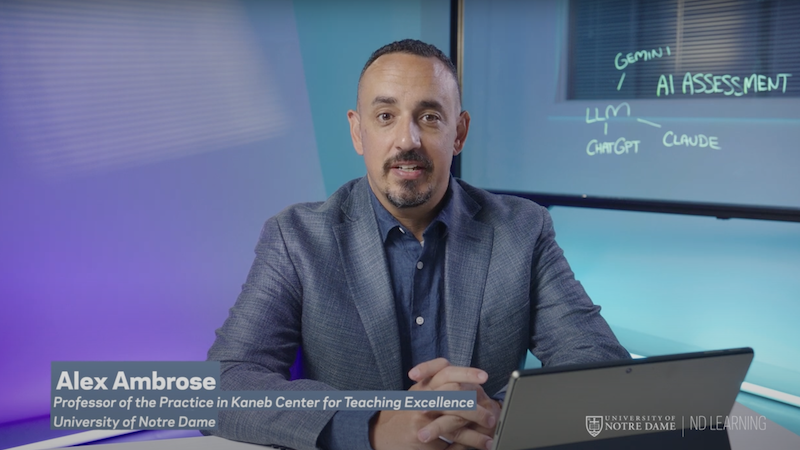
Enhancing Assignments with AI Transparency
2024-08-09
In this video, Alex Ambrose, a professor of the practice in Notre Dame Learning’s Kaneb Center for Teaching Excellence, demonstrates how to test AI tools on real assignments to understand their strengths and weaknesses. He provides steps for using AI to complete and evaluate assignments, emphasizing the importance of understanding the capabilities and limitations of these systems. The video includes examples from humanities and STEM courses, showing AI performance on various tasks. It highlights the need for ongoing evaluation and adaptation of assignments to maintain academic integrity as AI technology evolves. Viewers are encouraged to try different AI platforms and share findings with colleagues.
Resources
- Enhancing Assignments with AI Transparency
- Establishing AI Policies for Your Course
- Testing Your Assignments with AI (Includes Table from the Video)
-
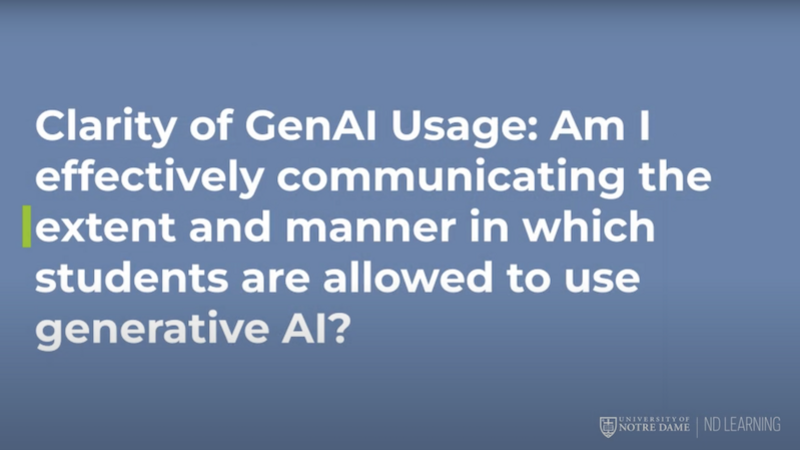
Practical AI Assessment Steps for Educators
2024-08-08
How do you balance AI use with academic integrity? Focusing on clear communication of AI policies and proper documentation, this video introduces the Generative AI Acceptable Use Scale, which helps instructors define AI use levels in assignments, from prohibited to full use with oversight. The video also emphasizes the importance of teaching students how to cite AI and document its use, including sharing prompts. Tools like assignment guides and an AI acknowledgment appendix are suggested to enhance transparency and integrity in student work.
Resources
- Testing Your Assignments with AI
- Five Things to Consider Before Giving AI-Based Assignments
- Enhancing Assignments with AI Transparency (Includes “Generative AI Acceptable Use Scale” Table from the Video)
- Assignment Appendix: AI Acknowledgement
-
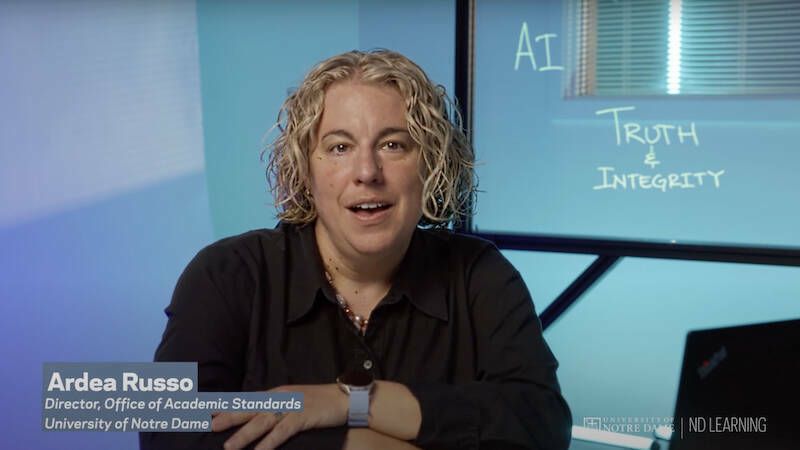
Navigating AI Tools with Integrity in Academia
2024-08-05
Ardea Russo, director of the Office of Academic Standards at Notre Dame, highlights the importance of academic integrity in the era of generative AI. Directed toward students, this video stresses the need for them to build foundational knowledge and evaluate AI outputs critically. Russo notes that Notre Dame’s policy prohibits submitting AI-generated or modified work unless explicitly allowed by professors. While AI can support learning, it should not replace personal effort, and she emphasizes that maintaining integrity and developing knowledge are essential for future success in both academics and professional life.
Resources